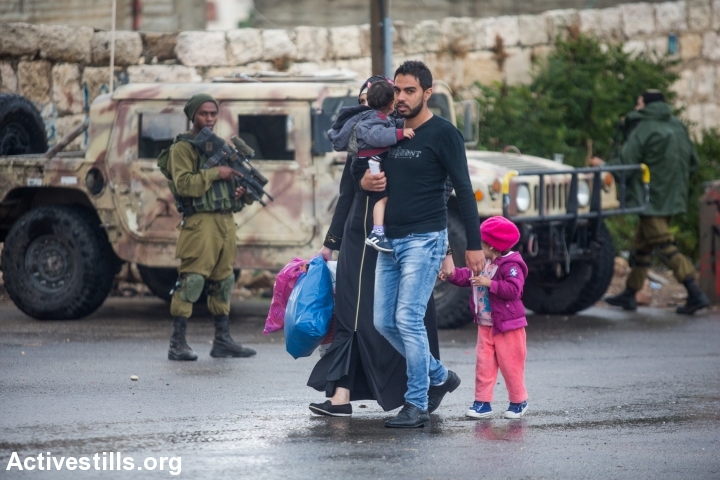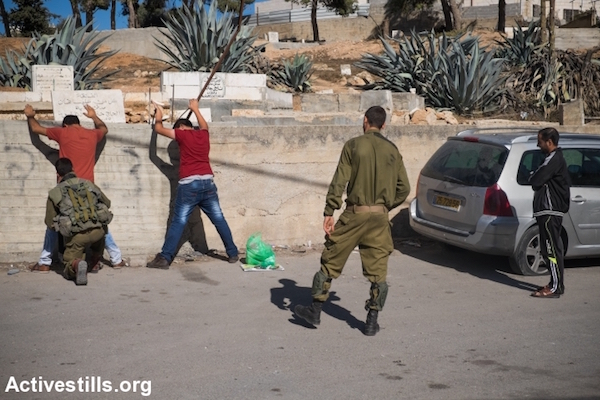Nearly 50 years after the occupation of Hebron, Israel still hasn’t figured out how to stop Palestinian violence.

If you have been attuned to the internal Israeli conversation over the past few days, you’ll have noticed that the drums of war are beating once again.
In a piece published Friday, Haaretz’s military and defense expert Amos Harel describes a growing rift among Israel’s leadership surrounding the recent violence that has, for the most part, moved from Jerusalem to the West Bank — and specifically the area surrounding Hebron.
Following a sharp increase in lethal attacks against Israeli soldiers and civilians in the area, Defense Minister Moshe Ya’alon and Education Minister Naftali Bennett have been trading blows over the most effective strategy the IDF should take to quell the violence. Ya’alon believes that the army is doing everything in its power to put an end to the attacks, while Bennett and his backers in the settler movement demand harsher policies against Palestinians in Hebron. Regardless of who prevails, the current assumption, according to Harel, is that “sooner or later the IDF will launch a large operation in the region.”
On the ground, life for Palestinians has become even tougher. The IDF reinforced its troops in Hebron last week with two additional infantry battalions, bringing the number of battalions operating in the area to nine. Meanwhile, hundreds of Palestinians have been arrested in the city and nearby villages, with soldiers inspecting nearly 1,500 Palestinian cars on a daily basis before allowing them to drive on the main roads in the Hebron and Bethlehem region.
Harel believes that despite increasingly tight security measures, more violence may force the army to go even further: “A lethal terror attack could push the Israel Defense Forces into imposing a curfew in some neighborhoods of the city and conducting house–to–house searches and mass arrests, even if the IDF General Staff is not keen to do so.”
No solution to the violence?
We know what is driving the recent attacks — many them committed by youth — in the West Bank. According to a recent report released by the Shin Bet, Palestinian youth are being driven to violence “based on feelings of national, economic and personal deprivation.” Without any organized leadership orchestrating the violence (although it is certainly being retrospectively praised by groups such as Hamas), the attack allows the perpetrators to escape a reality “that they are unable to change,” according to the report.

In Hebron it is nearly impossible for Palestinian residents to alter their circumstances. Subject to the whims of Israel’s military rule and perpetually vulnerable to the violence of Hebron’s extremist settler community, Hebron is where Palestinians come face-to-face with the most acute version of Israel’s regime of exclusion and segregation.
Harel suggests that a major terrorist attack could elicit a harsher military response. We saw this occur last summer following the murder of three Israeli teenagers, which prompted a wide scale invasion of the West Bank’s major cities. But what happens when an Israeli Jew commits a major terrorist attack against Palestinians? The answer is found in the IDF’s policies vis-a-vis the Palestinians of Hebron over the past 20 years.
Since Baruch Goldstein infamously massacred 29 Muslim worshippers at Hebron’s Ibrahimi Mosque in 1994, the Israeli army has continually restricted freedom of movement for Palestinians in areas near Israeli settlements in the city. In order to implement a policy of total separation, Palestinians have been banned from driving their cars on streets that run near the settlements.
Hundreds of Palestinian shops have been shut down over the last 20 years on military orders. On Shuhada Street, a main thoroughfare, the front doors of Palestinian homes have been welded shut, preventing the residents from exiting their own homes in order to walk on their own street.
Palestinians, for their part, have fought back against such policies. Groups such as Youth Against Settlements have organized unarmed protests against the occupation of the city, while establishing community centers where the young can learn about the power of nonviolent resistance.
Some Palestinians have turned to violence. The city has seen no shortage of gruesome attacks on Israeli civilians (in one horrific incident during the Second Intifada, a sniper shot and murdered a 10-month-old baby named Shalhevet Pass) over the past 20 years.
Violence is an intrinsic part of holding hundreds of thousands of people under military control. The top IDF brass and the political echelon clearly have different ideas for restoring calm to the city of the Patriarchs, yet neither of them seem to be able to propose ideas that could bring about a long-term respite. Put simply, 48 years into the occupation of Hebron, Israel still has no clue how to end Palestinian violence. Here’s an idea: end five decades of military rule, stop depriving millions of their rights, and convey to Palestinian youths the sense that they have control over their lives.
In other words: end the occupation.


